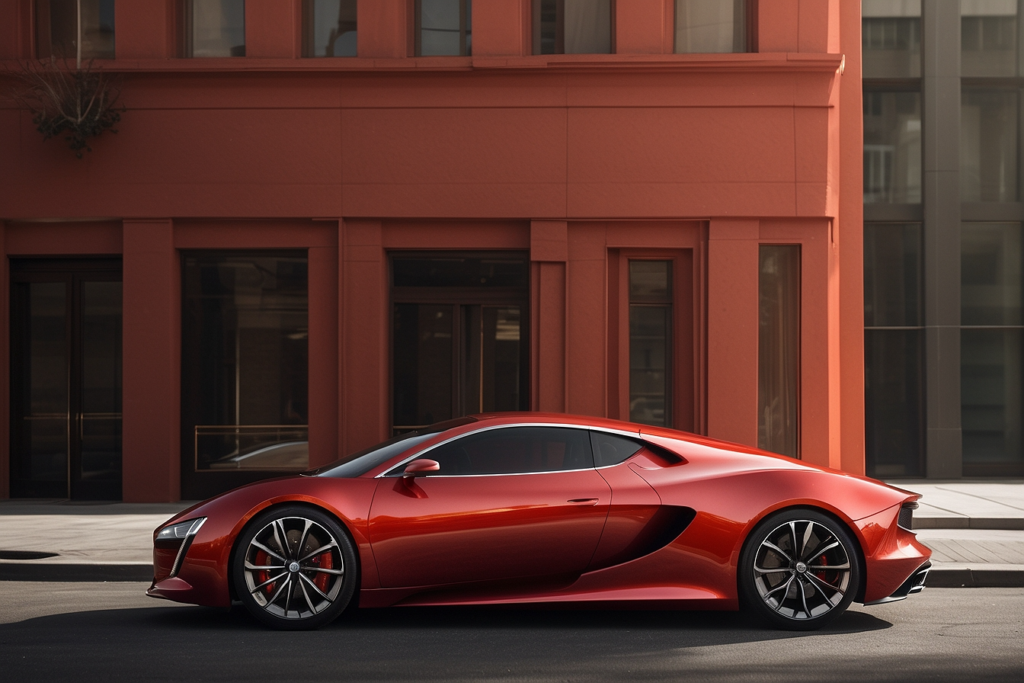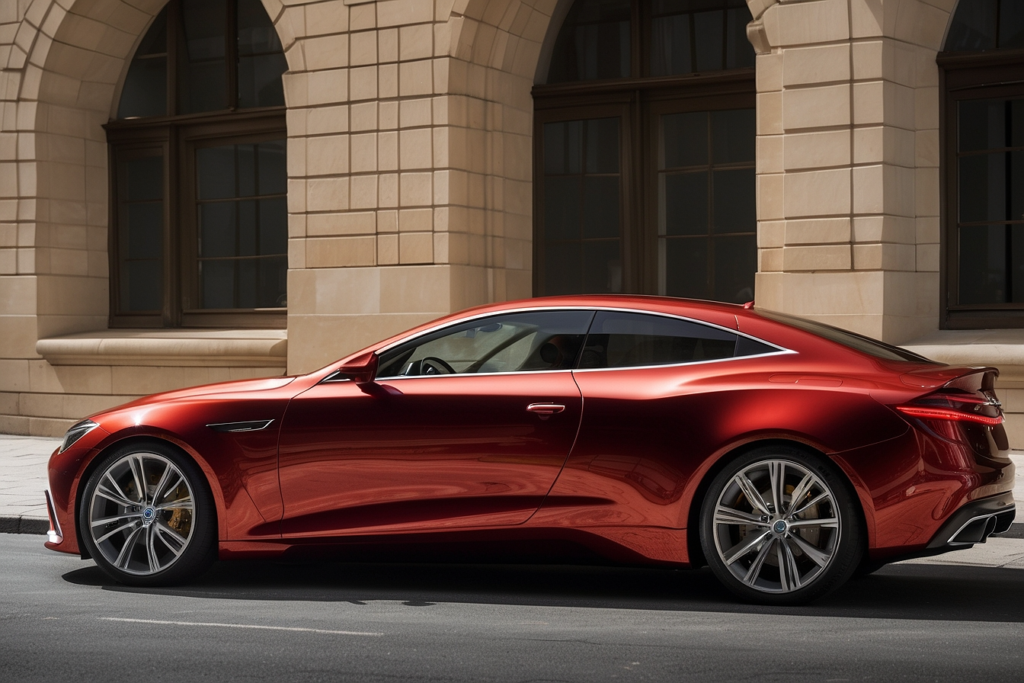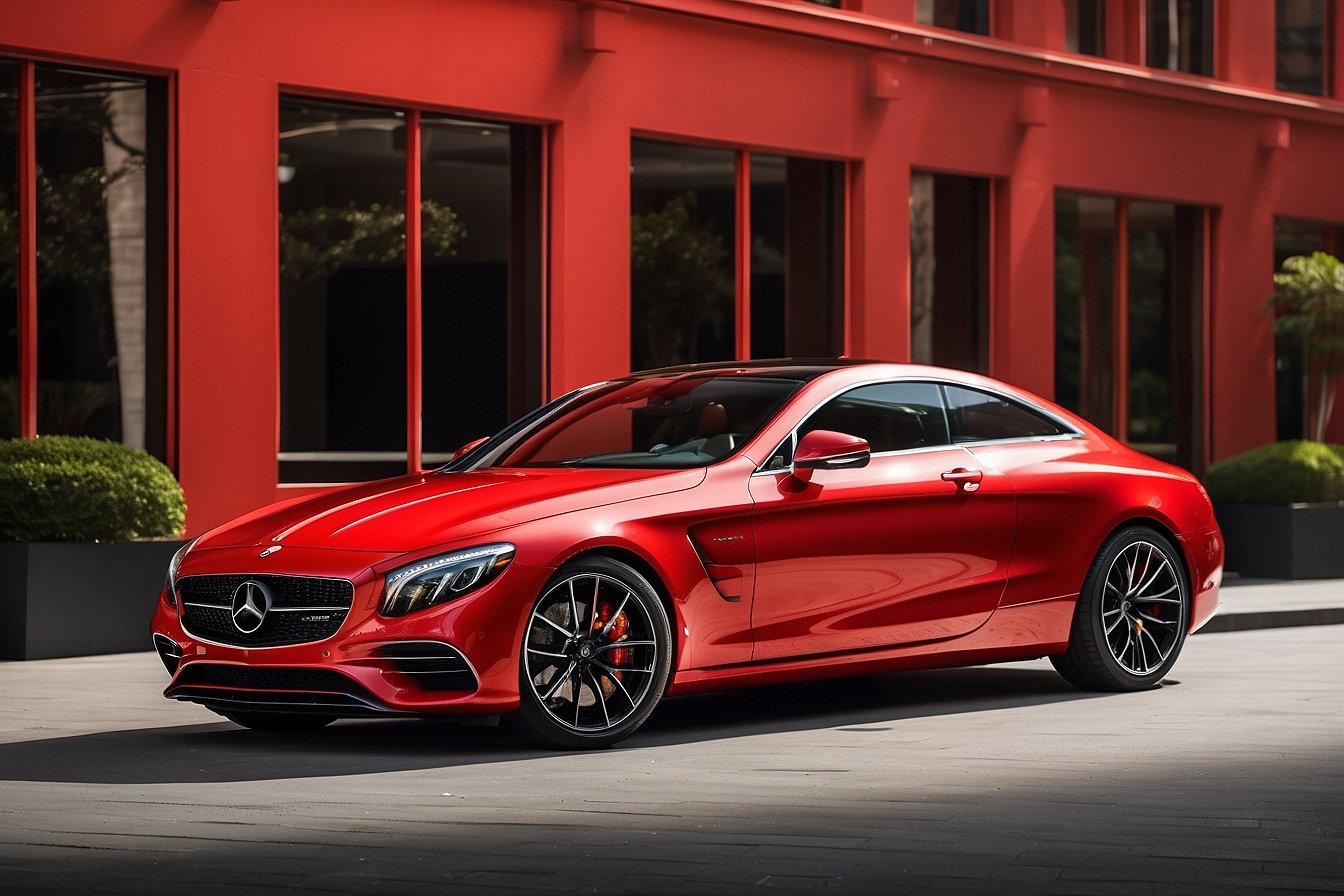
Buying a car is a big decision that requires careful consideration of many factors. Many buyers ponder whether to purchase a red vehicle or go with a more neutral color. There are pros and cons to getting a red car. Evaluating these potential advantages and drawbacks can help determine if a red automobile is the right choice.
Pros of Purchasing a Red Car
Several positives come with buying a red car. Here are some of the top benefits:
1. Stand Out from the Crowd
One of the biggest pros of choosing a red car is that it will stand out. Most cars today come in neutral, blended palette colors like white, black, gray, and silver. A bright red car will be eye-catching and make a bold style statement.
Red is an energetic, passionate color that symbolizes confidence. Driving a red vehicle can reflect a spirited, adventurous personality. It’s perfect for individuals who want their car to be noticed.
2. Potentially Higher Resale Value
Some research indicates that a red car may have a slightly higher resale value down the road than vehicles in other colors.
According to an iSeeCars study, red SUVs retained their value better than any other color over 5 years. The same study found red to be one of the top colors for retaining value across all vehicle types.
Kelley Blue Book has also named red a “best bet” color for resale value. This potential perk is likely because red is an attractive, popular color choice.
3. Easier to Spot in Parking Lots
Locating your vehicle in a crowded parking lot can be a headache. However, a bright red car is much easier to pick out than one that blends in with the sea of gray, white, and black vehicles.
You’ll save time hunting for your auto in packed lots and be able to spot it from a distance quickly. No more wandering up and down the aisles!
4. Eye-Catching Curb Appeal
A red car parked in your driveway or in front of your home adds vibrant aesthetic appeal. It can spruce up the look of your property and make your house stand out on the block.
Guests will also likely remember the red hot ride parked at your place. Pulling up in a red vehicle makes an unforgettable first impression.
5. Symbol of Speed and Performance
The color red is strongly associated with speed, power and high performance in the auto world. Many luxury sports cars, like Ferraris, Lamborghinis and Porsches, come in red.
Driving a red car can rush adrenaline and make you feel behind the wheel of a fast, responsive sports machine. This exhilarating effect occurs even if you’re driving an average family sedan or compact car.
6. Increased Visibility for Safety
The vibrant red hue increases your vehicle’s visibility versus a darker, more subtle tone. This enhanced visibility improves safety on the road.
Other motorists and pedestrians are more likely to see your red vehicle coming down the street, reducing the risk of collisions. This is especially important in low-light driving conditions.
Cons of Buying a Red Car

Despite the positives, some downsides should be considered before purchasing a red automobile:
1. Potentially Higher Insurance Rates
Many insurance companies charge more for red cars, especially for sports models. Some insurers associate the color red with speeding and reckless driving.
According to insurance.com, red cars can cost $600 to $1000 more per year to insure than vehicles in other shades. Getting quotes before buying is important to ensure the color doesn’t break your auto insurance budget.
2. Resale Value May Depreciate Faster
While red paint may help resale value initially, it could cause the car’s value to depreciate faster. Bright colors tend to go out of style faster than classic neutral tones.
In later model years, a red car may be tougher to sell and have a lower resale value than similar vehicles in more conservative hues.
3. Costs More to Purchase Upfront
Opting for a red car instead of a neutral color adds an upcharge to the purchase price. Red paint is considered a premium color choice by automakers.
Depending on the brand and model, this extra cost can range from a few hundred to a few thousand dollars. The initial price difference may diminish any enhanced resale value.
4. Shows Dirt and Imperfections
Red paint shows dirt, dust, scratches, swirl marks, and other imperfections more readily than lighter color options. Keeping the car looking its best will require frequent washing and waxing.
Driving a red car down a gravel road or muddy path will make all those particles stand out on the exterior. Red also tends to fade faster in the sun, losing its luster over time.
5. Increased Risk of Theft and Vandalism
Unfortunately, choosing a red car may increase the risk of auto theft or vandalism. Car thieves favor red because the vehicles are easier to spot at night during chop shop operations.
Some insurance companies also report higher vandalism rates for red vehicles, likely because the eye-catching color makes them a target. This is especially a concern in areas with high crime rates.
6. Can Cause Eyestrain in Low Light
The intense red color can create eyestrain when driving at night or in low-light conditions. The vibrant shade reflects brightly off the interior surfaces of the vehicle.
This glare and reflection can make it more difficult for your eyes to adjust properly in dim lighting. The red hue may also reduce your night vision capabilities on the road.
Key Factors to Consider Before Buying a Red Car
If you’re on the fence about purchasing a red automobile, here are some important considerations:
- Budget – Make sure the paint color’s extra cost fits your budget constraints. Get quotes for insurance rates, too.
- Driving Habits – Frequent long highway trips or off-road driving can quickly show wear on red paint.
- Garaging – Having covered parking helps maintain the color. Daily outdoor parking exposes the paint to fading elements.
- Future Plans – If you only plan to own the vehicle short-term, resale value matters less than long-term ownership.
- Personal Taste – While red grabs attention, it isn’t everyone’s style. Make sure it aligns with your preferences.
- Vehicle Type – Red is a common color choice for sports cars but less typical for family vehicles and trucks.
Conclusion

When shopping for a new car, the color decision can be difficult. A red automobile has some enticing advantages and a few cautions to remember. Evaluating the pros and cons based on your specific transportation needs and lifestyle will determine if a red car is the best selection for you. With so many models and customization options available today, you can likely find the perfect red hot ride if you decide it’s the ideal color choice.
Q: What is the impact of car color on resale value?
A: The color of a car can have an impact on its resale value. While some car owners believe that certain colors, such as black, metallic, or automotive white, may have higher resale value, no concrete evidence supports this claim. The resale value of a car depends on various factors, including its make, model, condition, and demand in the market.
Q: Does the color of a car affect road rage?
A: The color of a car does not directly affect road rage. Road rage is a behavioral issue that various factors, such as traffic conditions, driver behavior, and personal temperament can influence. The color of a car alone does not determine whether a driver will experience or exhibit road rage.
Q: Does it cost more to insure red cars?
A: A common misconception is that red cars cost more to insure. The color of a car is not considered a significant factor when determining insurance premiums. Insurance companies primarily assess a car’s make, model, age, and driving history, along with the driver’s profile, to calculate insurance rates.
Q: Do red cars get pulled over more often?
A: There is a popular belief that red cars are more likely to be pulled over by law enforcement. While some studies suggest that the color of a car may attract more attention from police officers, the difference is usually minimal. Overall, the likelihood of getting pulled over depends more on driving behavior and adherence to traffic laws.
Q: Are there any advantages to choosing a red car?
A: Regarding car color choice, opting for a red car has its benefits. Red cars are often associated with sports cars and can exude style and vibrancy. Additionally, some car enthusiasts prefer red metallic paint or red crystal finishes, which can enhance the vehicle’s overall appearance.
Q: Are red cars more likely to be involved in accidents?
A: The color of a car does not determine its likelihood of being involved in accidents. The probability of being in an accident depends on various factors, such as driver behavior, road conditions, and adherence to traffic rules. The color of a car alone does not make it more prone to accidents.
Q: Do red cars have a lower resale value?
A: Red cars do not necessarily have a lower resale value than other car colors. The resale value of a car depends on factors like its make, model, condition, and overall demand in the market. While personal preferences may vary, there is no concrete evidence to suggest that red cars have significantly lower resale value.
Q: Does the color of your car impact insurance rates?
A: The color of your car does not directly impact insurance rates. Insurance companies primarily consider factors such as the car’s make, model, age, and driving history, as well as the driver’s profile, when calculating insurance premiums. The color of the car is not a significant determinant in insurance pricing.
Q: Can the color of your car affect the chances of getting pulled over?
A: While there is a belief that the color of a car may influence the chances of getting pulled over, the color alone is not a decisive factor. Law enforcement officers primarily pull over vehicles based on driving behavior, adherence to traffic laws, and other visible violations. The color of a car may attract attention, but it does not guarantee being pulled over.
Q: Are there any specific car colors that have better resale value?
A: The resale value of a car is determined by various factors, and no specific car color guarantees better resale value. Popular car colors like black, white, silver, and gray tend to have a wider market appeal and may be easier to sell. Still, the overall resale value of a car depends on its overall condition and demand in the market.









Leave a Reply